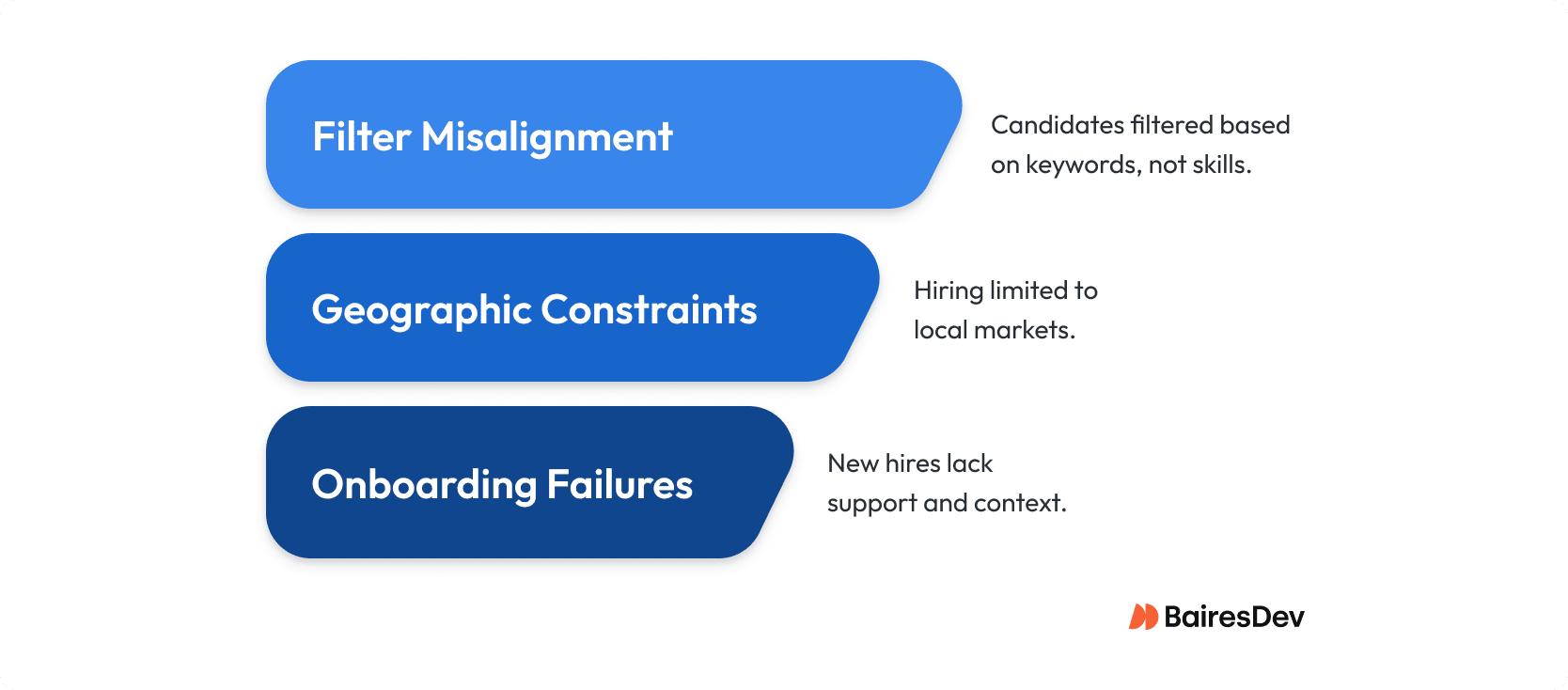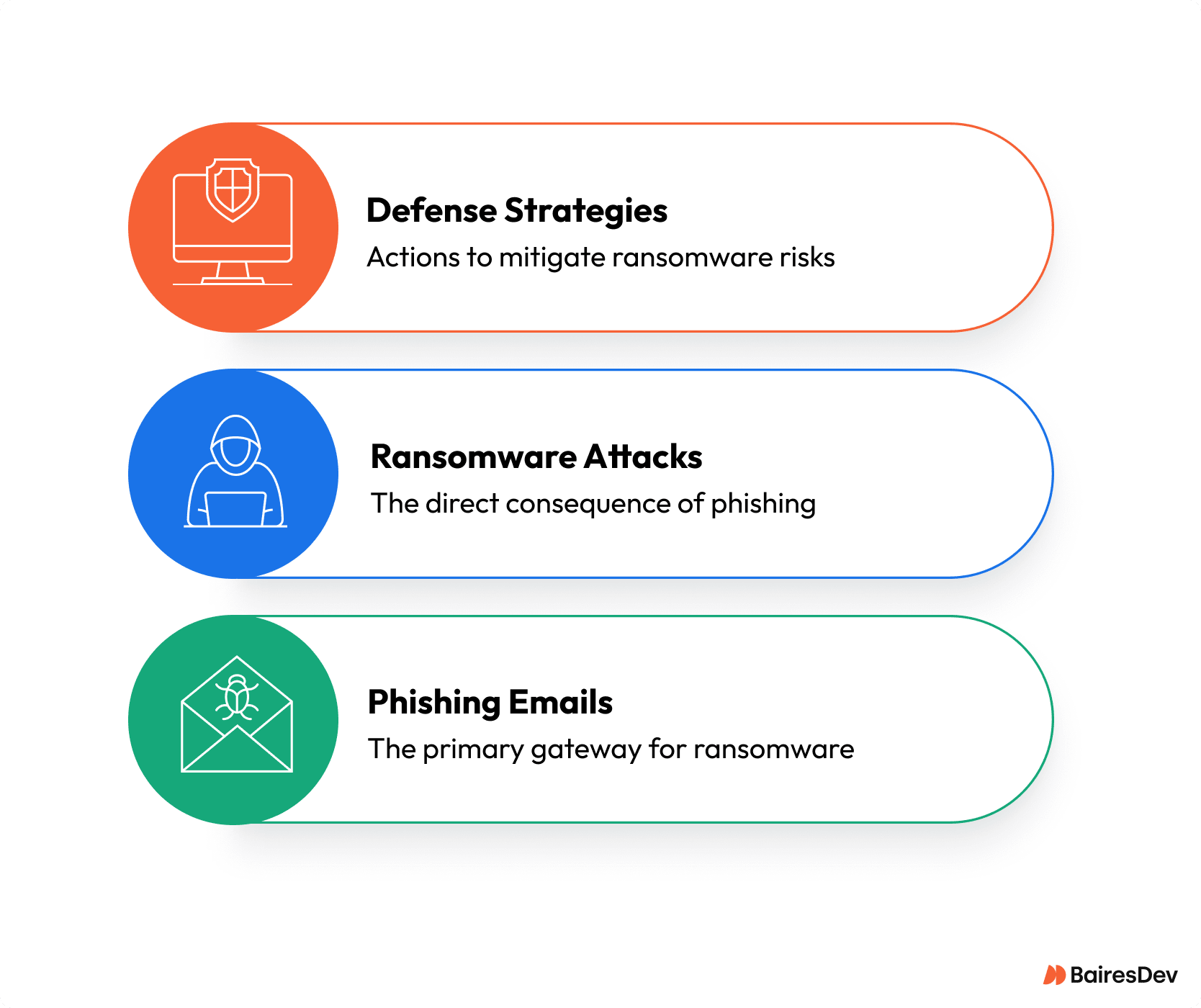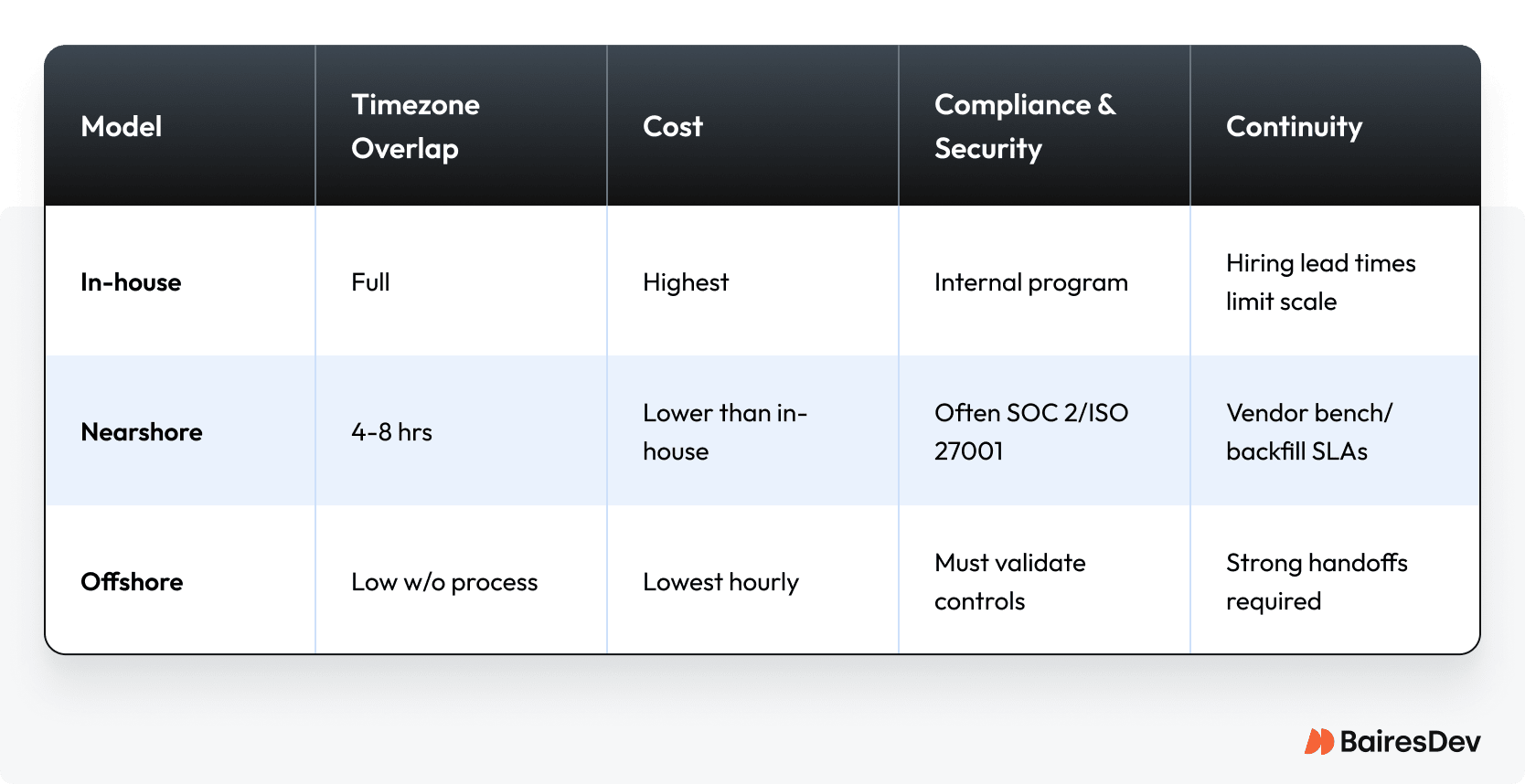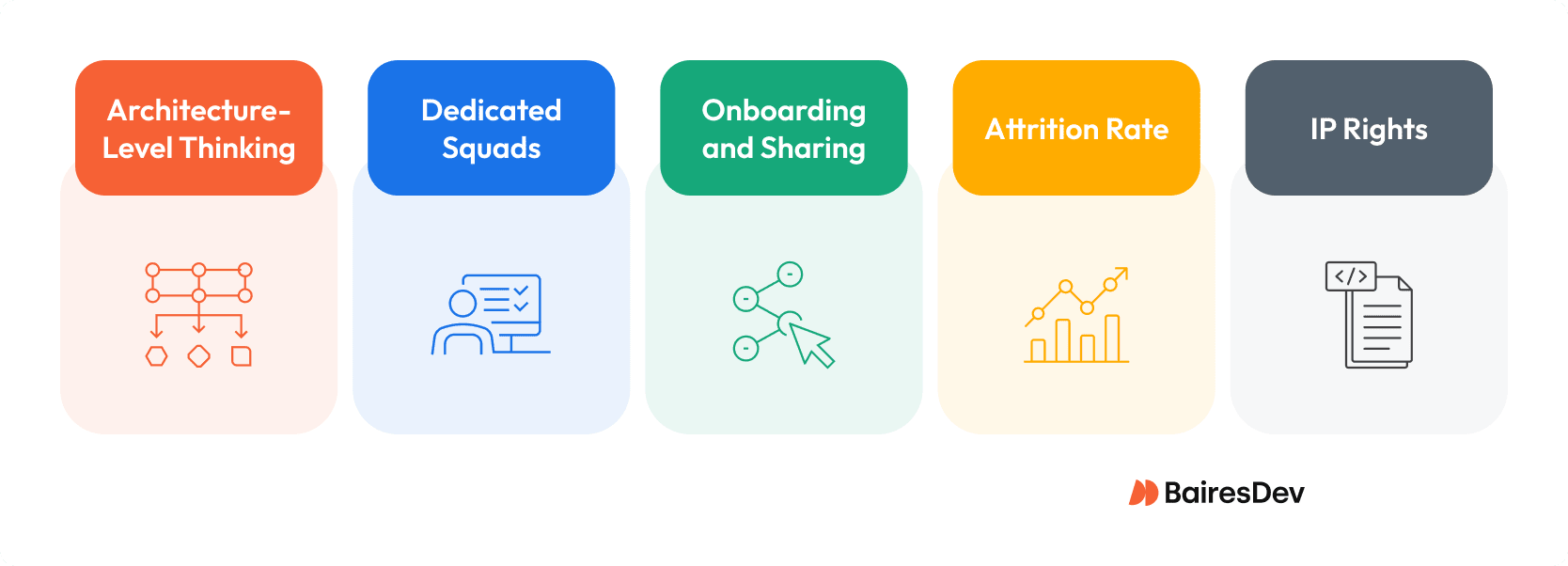The velocity of your engineering organization depends on one critical constraint: your ability to find, evaluate, and integrate exceptional technical talent. Yet most tech hiring processes are fundamentally broken. Many large organizations optimize their process for risk mitigation rather than capacity building, and everything is designed for steady operations rather than rapid scaling.
You’ve likely experienced this firsthand. Your recruiters send candidates who look good on paper but can’t code their way through a production debugging session. Your hiring cycles stretch to 12 weeks while critical features languish in the backlog. Your top talent spends 30% of their time interviewing candidates instead of shipping code.
This is not a talent shortage problem. It’s a tech talent acquisition problem.
Where Traditional Hiring Breaks Down
Legacy recruitment processes were designed for generalized roles and corporate functions, not complex, engineering-led organizations with tightly coupled delivery deadlines.
In the tech industry, hiring usually fails at scale for three fundamental reasons.

Misaligned Filters
The traditional recruitment process is optimized for placement volume, not engineering outcomes. Recruiters keyword-match resumes against job descriptions, creating a pipeline of candidates who can recite SOLID principles but can’t ship production code. Your hiring managers waste dozens of hours per quarter interviewing candidates who should have been filtered out at the screening stage.
Geographic Myopia
Most hiring funnels are restricted to local markets or traditional tech hubs. This artificial constraint drives up costs, extends time-to-hire, and excludes entire populations of competent engineers. Meanwhile, companies with mature global talent acquisition strategies have embraced remote work to build world-class teams at a 40-60% lower total cost of ownership.
Integration as an Afterthought
Even when you find strong engineers, onboarding often fails and creates a negative candidate experience. New hires languish for weeks without proper access, context, or useful mentorship from existing employees. By the time they’re productive, you’ve lost 2-3 months of potential velocity, assuming they haven’t already accepted a competing offer from another company. In a competitive market, top tech talent is in constant demand. This makes poor onboarding a huge liability.
Building Scalable Tech Talent Pipelines
Fixing tech recruitment and hiring requires rethinking the entire acquisition funnel. Stop treating hiring like a series of one-off transactions. Start thinking like a platform team: build systems that deliver high-quality developers at scale, with consistency and low operational drag.
By aligning hiring operations with evidence-based engineering practices, like the DORA State of DevOps Report, tech leaders can build a hiring process that delivers high-performing teams.
The first component to fix is the technical evaluation itself.
Design Technical Evaluations That Predict Performance
Adopting a skills-based hiring model means abandoning traditional whiteboard interviews and algorithmic puzzles, which reveal little about an engineer’s ability to deliver value in your environment.

Start with production-realistic assessments. Give candidates a simplified version of an actual problem your team recently solved. Focus on evaluating their approach to requirements gathering, technology selection, and implementation trade-offs. Here is an example: “Here’s a service that’s experiencing intermittent timeouts under load. Walk us through your debugging approach and propose a fix.” This question and its answer reveal more about real-world capability than any LeetCode problem.
Have candidates review and provide feedback on real (anonymized) pull requests from your codebase. This way, you will test their ability to understand existing systems and communicate effectively with team members. Look for constructive feedback style, attention to both functionality and maintainability, and awareness of broader system implications.
For senior roles, you need a different approach. You cannot evaluate senior engineers the same way you would juniors. Especially avoid LeetCode and algorithmic challenges. Instead, present them with an architectural challenge. Engage them in a technical discussion about potential solutions. Look for systems thinking, awareness of trade-offs, and the ability to balance technical idealism with business constraints. Example: “We need to migrate from a monolithic Django application to microservices while maintaining 99.9% uptime. How would you approach this?”
Avoid over-optimizing for “correctness” on whiteboard questions. Instead, focus on the signal that predicts real-world delivery under pressure—something Joel Spolsky’s Guerrilla Guide to Interviewing explains well.
Fixing how you interview is only half the battle. The other half is fixing where you look.
Nearshore vs. Offshore vs. In-House: Making the Right Choice
The geographic sourcing decision shapes everything else about your talent strategy.

In-house teams offer direct control, profound product knowledge, and simplified communication. However, they also result in a limited talent pool, the highest cost structure, and scaling constraints. In-house teams are best for core platform teams and security-critical components.
Nearshore teams are located at a 1-3 hour time zone difference, meaning they still offer great real-time collaboration and cultural alignment. The nearshore model offers access to a larger talent pool and competitive pricing. The approach requires vendor vetting, potential IP concerns, and integration complexity. Nearshore vendors are the go-to option for scaling development capacity, particularly when seeking specialized expertise.
Offshore teams are teams located in different time zones. Huge time gaps result in communication latency, cultural barriers, quality variance, and complex management overhead. However, offshore engagements still have a lot going for them. They offer the largest talent pool and access to the lowest rates. For some, the greatest advantage is the potential for a 24/7 development cycle.
For fast-moving enterprise teams, nearshore models often hit the sweet spot, particularly when you need overlap, mature communication, and better contextual awareness. The Stack Overflow Developer Survey offers valuable data on where top tech talent resides and how location impacts collaboration.
Vendor Evaluation and Risk Management
If you pursue nearshore or offshore strategies, vendor selection becomes critical. The most dangerous outsourcing decision is selecting a vendor who’s optimized for body counts, not outcomes.

Use this checklist to evaluate whether a sourcing partner can operate as a long-term capacity extension:
- Do they screen for architecture-level thinking, not just individual contributor output? See Netlify’s approach to engineering hiring for an example.
- Do they offer dedicated teams or rotate contractors across projects?
- How do they handle onboarding and context sharing?
- What’s their attrition rate, and how is backfill handled?
- Are IP rights, data handling, and contractor classification well documented? UpCounsel’s IP guides are a good primer.
You want a partner, not a resume factory.
Measuring What Matters
Avoid vanity metrics like the number of candidates screened or interviews conducted. Instead, focus on engineering velocity and business impact—track talent acquisition effectiveness through metrics that matter to engineering outcomes.
Start with Time to Productivity. How many days does it take the new hire from the start date to the first production deployment? The ideal target for senior engineers should be less than 30 days.
What is your Pipeline Velocity? How many days did it take from initial contact to offer acceptance?
What is the Quality of Hire? Check performance ratings at 6 and 12 months correlated with the sourcing channel and retention rates. You should target at least 90% retention at 12 months.
These metrics align with DORA’s research on high-performing engineering organizations. For enterprise engineering organizations, any inefficiency translates into missed release targets, overworked teams, and opportunity costs that accrue quickly. DORA’s Four Key Metrics provide a valuable framework for understanding how talent inefficiencies show up in delivery performance.
Common Pitfalls and How to Avoid Them
Onboarding as an Engineering Problem
Ramp-up time is a hidden cost, but a controllable one. Engineering leaders must own the onboarding experience just as much as the HR team.
Use role-specific onboarding paths. These paths can consist of codebase immersion, tooling setups, a full overview of your tech stack, and key architectural documents. Next, assign an onboarding buddy with scheduled checkpoints. Do not forget strong documentation and internal wikis to accelerate ramp-up.
For inspiration, see how Gusto scaled engineering hiring and integrated rapid onboarding into its process.
Contractor Misclassification
Treating contractors as employees without a proper legal structure creates significant liability. The IRS examines the actual working relationship, not just contractual terms.
They consider the degree of control over work methods and schedules, whether workers use their equipment, the opportunity for profit or loss, and the permanency of the relationship. A contractor who works exclusively for your company, uses your equipment, and follows your prescribed hours looks like an employee to regulators, regardless of what your agreement says.
Use Master Service Agreements (MSAs) with clear Statements of Work (SOWs). These documents define deliverables rather than prescribe methods. Also, avoid providing company equipment, mandating specific hours, or restricting contractors from other clients. The key is to understand the nuances of contractor versus employee classification. Maintain a relationship that respects the contractor’s independence while achieving your technical objectives.
This is where partnering with a US-registered vendor mitigates significant risk. Your contract is with a US entity under familiar US law. The vendor takes on the full burden of navigating complex international labor laws, tax compliance, and more.
If working with EU-based contractors or handling EU data, ensure compliance with GDPR data protection rules.
IP Protection and Security
When working with external talent, intellectual property protection requires proactive measures that go beyond standard contract language.
Start with a secure, straightforward IP assignment. However, paperwork alone won’t protect your code. Implement technical controls that enforce the principle of least privilege for repository and system access. External developers should only access specific systems and repos required for their current work, with permissions regularly reviewed and revoked when projects are complete.
Security training becomes non-negotiable before granting any system access. This security approach isn’t just checking a compliance box. It’s about ensuring that external team members understand your security protocols, data handling requirements, and incident response procedures.
Maintain comprehensive audit trails of code commits, system access, and data handling. These logs serve both security and compliance purposes, allowing you to track who accessed what and when. Consider implementing additional controls, such as code review requirements for all external contributions and automated security scanning, in your CI/CD pipeline.
Knowledge Concentration
Over-reliance on any single team or vendor creates risk. Maintain documentation standards, conduct regular knowledge transfer sessions, and rotate responsibilities to prevent single points of failure. Implement a “bus factor” metric—no critical system should have fewer than three people who understand it deeply.
Cultural Impedance Mismatch
Forcing remote or nearshore teams to adopt incompatible work styles breeds frustration. Instead, adapt processes to leverage each team’s strengths while maintaining overall coherence. This adaptation might mean asynchronous standups for distributed teams or adjusting sprint ceremonies to accommodate multiple time zones.
The Path Forward
Talent acquisition can no longer be an HR problem handed downstream. Building world-class engineering organizations requires abandoning traditional hiring orthodoxies. For engineering organizations pursuing scale, reliability, and reduced cycle time, hiring is a core system that engineering leaders must co-own.
The companies winning the talent war aren’t those with the most significant recruiting budgets or the most prestigious brands. They’re the ones who’ve built systematic, scalable approaches to identifying, evaluating, and integrating technical talent regardless of geographic boundaries.
The organizations that do this well don’t just hire faster—they build more resilient, adaptive, and high-performing teams. The question isn’t whether to evolve your hiring practices, but how quickly you can outpace your competition in doing so.
Frequently Asked Questions
How should we handle sourcing for highly specialized or niche technical skills?
Go beyond standard job boards to source talent directly from open-source projects, niche technical communities, and contributor lists. Use targeted outreach to focus on passive candidates, demonstrating a deep understanding of their specialized work to create genuine engagement.
What evaluation process best predicts on-the-job performance?
Start with role scorecards and calibrated rubrics. Use realistic work samples like debugging or PR reviews. For seniors, run architecture discussions. Hold debriefs with a bar raiser. Verify by 30/60/90 day outcomes and feed results back to sourcing.
How do we mitigate IP and contractor misclassification risk at scale?
Use strong MSAs and SOWs with IP assignment and confidentiality. Set governing law and venue. When classification is uncertain, use an EOR or PEO. Enforce least privilege, short-lived credentials, device standards, and rigorous offboarding. Keep proof via VCS history, signed artifacts, and immutable logs.
Is AI just another buzzword, or does it actually make an applicant tracking system (ATS) better?
Like any other recruitment technology, artificial intelligence shouldn’t replace judgment. In a well-configured ATS, it reduces noise by surfacing overlooked candidates and automating volume screening, freeing your team for human evaluation.
How can internal mobility drive talent retention and help us attract candidates?
It’s a powerful tool for talent retention and a strong signal to the market. A visible internal mobility program shows you invest in your people, strengthening your employer brand to attract strong candidates who seek a long-term career.






